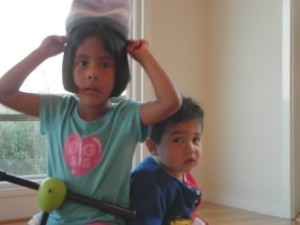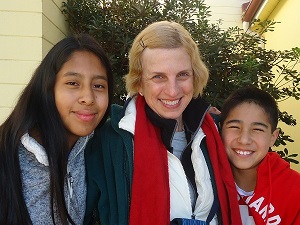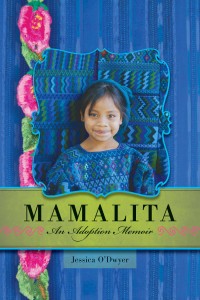On her 25th birthday, Kahleah Chisholm Guibault wrote this letter to her birth mother. Kahleah was born in Guatemala and grew up in Canada. Some two years ago, she moved back to Guatemala, where she works in an orphanage. The opinions expressed in the letter belong to Kahleah, and I’m grateful to her for allowing me to share. ~
 Kahleah Chisholm Guibault
Kahleah Chisholm Guibault ![]() feeling blessed.
feeling blessed.
Dear birthmother,
Did you know I never really liked my birthday? I can imagine you don’t much like my birthday either. I always loved the idea of a birthday; the parties, the gifts, the friends and family. And man did I every get the best ones growing up! I like that part of it. But the actual day itself, meh. I could go without. I think its because more than anything for me, for 5-year old me, for 10-year old me, for 25-year old me it marks loss. I know that 25 years ago, in a little clinic at the foot of a volcano, there was no family patiently waiting in the waiting room for the exciting news that I was born. There were no grandparents excited about my arrival. From what I can tell there was no father waiting impatiently to hold me. I know there was no baby shower or celebration during the months I was in your belly. I know there was probably panic and stress and sadness during your pregnancy. I know there was no joy as they cleaned me and dressed me and took me away. I know that there is a probable chance that we never laid eyes on one another.
Did you know that I spent a lot of years being mad? And sad. And hurt. I spent a lot of time thinking that you should have tried. You should have kept me for better or for worst because that’s what moms do. They fight for their children and give the best they can. That’s what I thought I would do so why shouldn’t you? And that wasn’t fair. It took 25 years for me to realize but you did do what is best for me. I think part of it is a perspective I gained form living here. Life is so miserable here sometimes. This beautiful country that I love so much is lacking in almost every social service. Medical care is something that most people cannot afford. Feeding your children is something that is a daily struggle. Malnutrition is rampant in this country and children die every day. The school system is decent at best, and if you are a girl, you are the last priority. Life here can be so so miserable and I realize that that’s exactly what you didn’t want for me. I think the pain of loss overshadowed that for me for so long. The pain of not being wanted. Or at least of thinking I was not wanted by you.
But here’s the bottom line, the truth and the realization that I have come to accept and realize and be thankful for in my quarter century of life: you gave me life and then gave me the chance to live it, to really fully live it. You gave me a father and mother, together. You gave me a brother. You gave me wonderful aunts and uncles, and later cousins. You gave me the ability to speak three different languages. You gave me education. You gave me a full stomach every single day. You gave me a chance at university. You gave me away because that’s what mothers do: what’s best for their kids.
And I thank you. As I sit here in my comfortable home, with a job I love, friends and family who are incredible, I thank you. I thank you for doing the most unselfish loving thing a mother can do. Something that requires so much strength that just thinking about having to do the same hurts my heart so deeply. So happy my birthday to you. The last time we were together was 25 years ago today, but that’s the great thing about love. You carry those you love in your heart every single day.
All my love, xo



 ShareThis
ShareThis

